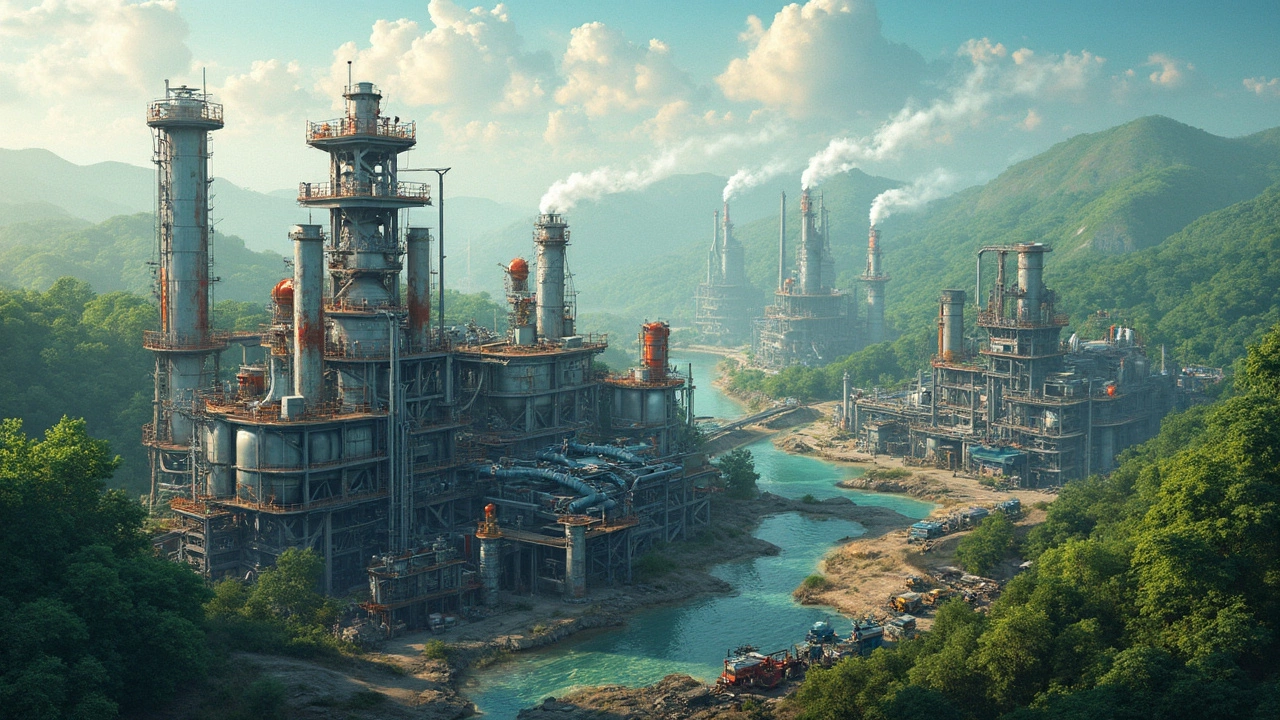- Kiran Mazumdar‑Shaw: The Pharma Queen of India Explained Oct 13, 2025
- Indian Textile Industry Collapse: What Really Happened and What It Means for Manufacturers Apr 23, 2025
- India Manufacturing: Key Industries and What the Country Mainly Produces Sep 25, 2025
- Chemical Manufacturers India: Which State Leads Production? Jun 16, 2025
- The Truth About Zero Waste Countries: Can Any Nation Claim Zero Landfills? Jul 3, 2025
India Chemical Production: What’s Driving the Boom?
If you’ve ever wondered why chemicals are popping up in headlines about India’s economy, you’re in the right spot. The country’s chemical sector has become a heavyweight, feeding everything from fertilizers to pharma. In 2023‑24 the industry crossed $120 billion in output, and the pace isn’t slowing.
One big reason is the sheer size of India’s domestic market. With over 1.4 billion people, demand for consumer goods, construction materials and automotive parts keeps the chemical factories busy. Add to that a growing export push—India now ships more than 30 % of its chemical output to the U.S., Europe and the Middle East.
Where the Production Happens
Not all states are equal when it comes to chemicals. Gujarat leads by a wide margin, contributing roughly 35 % of the nation’s total chemical output. Its strategic ports, reliable power supply and investor‑friendly policies make it a magnet for petro‑chemical giants. Maharashtra and Tamil Nadu follow, focusing on specialty chemicals and polymers.
If you’re scouting a location for a new plant, look at the state‑level incentives. Gujarat offers up to 12 % capital subsidy on green‑field projects, while Karnataka provides tax holidays for the first five years of operation. These perks can shave millions off your bottom line.
Top Product Segments
Basic chemicals like methanol, ethylene and caustic soda still dominate the volume chart. But the real money movers are specialty chemicals—pharma intermediates, agro‑chemicals and performance polymers. The pharma intermediate segment alone grew 9 % YoY, thanks to a surge in generic drug manufacturing.
Another hot trend is sustainable chemicals. Companies are shifting to bio‑based feedstocks, and the government’s “Make in India – Green” initiative backs projects that cut carbon footprints. If you can blend cost‑competitiveness with eco‑friendly processes, you’ll find a ready market.
Logistics also matter. The Dedicated Freight Corridor (DFC) is cutting rail transit times by half, making it easier to move bulk chemicals from inland plants to coastal ports. Faster shipments mean lower working capital needs and fresher inventory for specialty products.
For small and medium players, partnering with a contract manufacturer can fast‑track entry. Firms like Rise Corp India offer turnkey solutions—design, engineering, and execution—so you can focus on product development instead of building a plant from scratch.
Challenges remain, though. Power shortages in some regions still cause downtime, and raw material price volatility (especially crude oil) can squeeze margins. Keeping an eye on global oil trends and negotiating long‑term supply contracts can mitigate this risk.
In short, India’s chemical production is a blend of massive scale, strategic geography, and evolving technology. Whether you’re an investor, a supplier, or a startup looking to launch a new chemical line, the market offers plenty of opportunities—provided you choose the right state, tap into government incentives, and stay ahead of sustainability demands.
Chemicals Manufactured in India: A Deep Dive into the Industry
- Aarav Sekhar
- Apr 14, 2025
India is a powerhouse in chemical manufacturing, producing everything from fertilizers to pharmaceuticals. This article delves into the various types of chemicals produced across the country, spotlighting key regions and their specialties. You'll explore India's massive output in industrial chemicals, its role in meeting global pharmaceutical demands, and the environmental challenges faced by the industry. Discover the factors that make India a critical player in the global chemical market with practical insights for those looking to engage with India's chemical sector.
